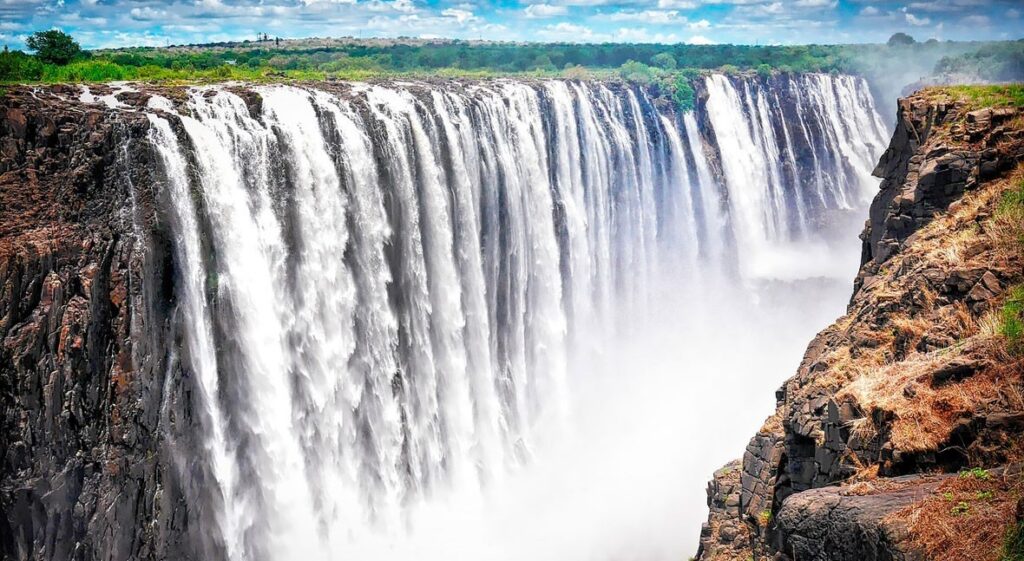A country rich in vibrant culture and extreme natural beauty, Zambia offers unforgettable opportunities to explore waterfalls, expansive national parks and experience amazing wildlife.
In the third of our showcase series, we’ve delved into one of our favourite African countries to bring you seven lesser-known facts about wonderful Zambia.
1. Lusaka
Lusaka was originally built as a village, which was designed to house 200,000 people. Today the capital of Zambia is home to over 1,500,000 people, and is one of the fastest growing cities in the country. It is often described as a “boom town”, with bustling open markets, modern commercial buildings, and a diverse community living and working within the city centre.
2. The naming of Zambia
Before Zambia claimed independence in 1964, it was known as Northern Rhodesia. The name Zambia comes from the Zambezi river, which flows along the border between Zambia and Zimbabwe. The Zambezi is the fourth largest river in the world, uniting six countries from central Africa to the Indian Ocean.
3. Victoria Falls
Victoria Falls, located on the border of Zambia and Zimbabwe, is one of the seven natural wonders of the world. It is also the only waterfall in the world with a length of more than a kilometre and a height of more than one hundred metres. It is a site of extreme natural beauty, which is protected by two national parks.
The noise of Victoria Falls can be heard from an almighty distance of 40 kilometres, while the spray from the falling water rises to 400 metres and reaches a distance of 50 kilometres. The nearby forest is incredibly luscious as it receives ‘rain’ from the falls 24 hours a day.
4. Kafue National Park
Kafue national park is the oldest and largest national park in Zambia – it is roughly the same size as Wales, a country in the UK. Found in the centre of western Zambia and covering a massive 22,400 km2, it is largely left untouched by man, with vast areas of the bush remaining completely preserved.
Over 55 different species of animals live in the park, including rare types of antelope, as well as the rare African wild dog. It is also considered to be one of the best places in Africa to see a leopard.
5. Traditional Culture
Prior to the modernisation of Zambia, the natives lived in independent tribes. During colonisation, most of these tribes moved in migratory waves and the process of industrialisation and urbanisation saw people from over 70 ethnic groups brought together by economic interests.
However, many of these ethnic groups have retained their own traditional customs. One of the most famous Zambian ceremonies is Kuomboka, which takes place at the end of the rainy season. It is in celebration of the Lozi king, who traditionally travels back down the Zambezi river after moving to higher ground, prior to the seasonal flooding.
6. Languages
There are 72 languages spoken in Zambia, from a range of different origins, including 18-19th century migration. Many of these are more widely regarded as dialects, and only seven of these languages have official status. Bemba, Nyanja, Lozi, Tonka, and Kaonde, Luvale and Luna, alongside modern English are taught in primary schools and used to write government publications. English is the first language of only 2% of Zambians but is the most commonly used second language.
7. Zambia is completely landlocked
Zambia is one of fifteen landlocked countries across the whole of Africa. In order to see the Ocean, you’d have to travel over 1000 kilometres. Despite this, there are some of the largest and most beautiful rivers and lakes in the world in Zambia, including Lake Tanganyika and Kariba.
Lake Tanganyika is the second largest and deepest freshwater lake in the world and Lake Kariba is so huge that in certain parts, unknowing visitors mistake it for the ocean. Home to some of the world’s most incredible areas of natural beauty, Zambia is the perfect holiday destination to be enjoyed by all ages.
